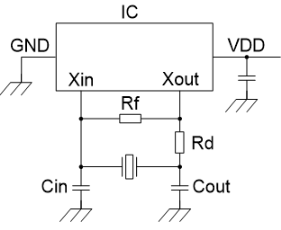- mail_outlineContact
-
Site Search
Please enter a keyword
Site Search
Please enter a keyword
Products
Products
- Crystal Unit
- Crystal Oscillator
- Frequency Synthesizer
- Signal Generator
- Millimeter-Wave Converter
- Synthetic Quartz Crystal
- Optical Component
- QCM Sensor
- Outgas Analysis System
- Ultrasound Probe (Transducer)
- SAW Devices (Manufactured by NDK SAW devices Co., Ltd.)
-
Space
-
Infrastructure / Industrial Equipment
-
Automotive
-
Mobile
-
AV / OA, Medical, Healthcare, Household Appliance
-
Search from Connectivity Standards
Product Search
Investor Relations
Sustainability
-
NDK Group Sustainability
-
Environment
- Top Page of Environments
-
Environmental Philosophy and Policies
- Environmental Philosophy and Policies Top
- Environmental Philosophy and Policies of NDK
- Environmental Philosophy and Policies of Furukawa NDK Co., Ltd.
- Environmental Philosophy and Policies of Hakodate NDK Co., Ltd.
- Environmental Philosophy and Policies of ASIAN NDK CRYSTAL SDN. BHD.
- Environmental Philosophy and Policies of NDK QUARTZ (M) SDN. BHD.
- Environmental Philosophy and Policies of Suzhou NDK Co., Ltd.
- History of Enviromental Conservation
- Enviromental Management System
- Enviromental Performances
- Green Crystal Technology™ —NDK Environment Support—
- Promoting Green Procurement
- Aproaches to Substance of Concern
- Measurement Data (Sayama Plant)
- Suzhou NDK Co., Ltd. Environmental initiatives
- Environmental Report
-
Society
-
Governance
- ESG Data
Outgas Analysis System
Ultrasound Probe (Transducer)
Synthetic Quartz Crystal
Optical Component
QCM Sensor
-
NAPiCOS Series
-
Product Overview
-
Application Examples
- Measurement of label free immune response of the acute phase protein CRP
- Immuno-measurement of low-concentration insulin (100pg/mL ~ 20ng/mL)
- Evaluation of Peptide's property of binding to PMMA stereo- complex membrane
- Calculation of the dissociation constant of glycoprotein
- Measurement of allergen contained in food extract
- Double-strand DNA formation & Protein binding
- Binding transcription factor to DNA
- Quantification sensor for concentration of antibody drugs
- Measurement of low-molecular substance
- Quantitative Evaluation of Beer Body
Oscillation Circuit Evaluation Methods
Failure Cases
Failure case 1: Non-oscillation
There is a possibility of non-oscillation mainly in the following cases
1.When negative resistance is insufficient
As a related matter, please refer to "What is Negative resistance (1)<Overview and Target Values of NDK>".
2.When there is no appropriate feedback resistor (Rf) in the circuit
If a feedback resistor (Rf) is built into the IC, it is unnecessary to have an external feedback resistor (Rf) as shown in Fig. 1.

3.When the unit is operated to outside of the temperature range specified by the crystal unit or IC.
4.When parts are not mounted properly in the circuit
Failure Case 2: Deviation of the oscillation frequency
In the following cases, oscillation may not occur at the proper oscillation frequency.
1. When there is a large difference between the circuit load capacity and the load capacity specification of the crystal unit.
As a related matter, please refer to the difference of oscillation frequency (3) <improvement method>.
2.When temperature characteristics of the crystal unit are not considered
As a related matter, please Refer to Temperature Characteristics (1) <Difference in Oscillation Frequency>
3.When parts are not mounted properly in the circuit
Failure Case 3: Oscillation does not occur in normal mode
3.This is a case of "it is necessary to oscillate with a fundamental wave, but it oscillates with a third-order overtone."
For details, refer to "What is Negative Resistance (5) <Tertiary Overtone Characteristics>
